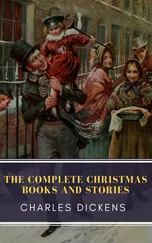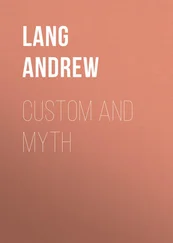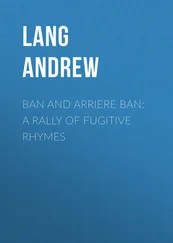Andrew Lang - Books and Bookmen
Здесь есть возможность читать онлайн «Andrew Lang - Books and Bookmen» — ознакомительный отрывок электронной книги совершенно бесплатно, а после прочтения отрывка купить полную версию. В некоторых случаях можно слушать аудио, скачать через торрент в формате fb2 и присутствует краткое содержание. Жанр: foreign_antique, foreign_prose, на английском языке. Описание произведения, (предисловие) а так же отзывы посетителей доступны на портале библиотеки ЛибКат.
- Название:Books and Bookmen
- Автор:
- Жанр:
- Год:неизвестен
- ISBN:нет данных
- Рейтинг книги:3 / 5. Голосов: 1
-
Избранное:Добавить в избранное
- Отзывы:
-
Ваша оценка:
- 60
- 1
- 2
- 3
- 4
- 5
Books and Bookmen: краткое содержание, описание и аннотация
Предлагаем к чтению аннотацию, описание, краткое содержание или предисловие (зависит от того, что написал сам автор книги «Books and Bookmen»). Если вы не нашли необходимую информацию о книге — напишите в комментариях, мы постараемся отыскать её.
Books and Bookmen — читать онлайн ознакомительный отрывок
Ниже представлен текст книги, разбитый по страницам. Система сохранения места последней прочитанной страницы, позволяет с удобством читать онлайн бесплатно книгу «Books and Bookmen», без необходимости каждый раз заново искать на чём Вы остановились. Поставьте закладку, и сможете в любой момент перейти на страницу, на которой закончили чтение.
Интервал:
Закладка:
The register of Maid’s Moreton, Bucks, tells how the reading-desk (a spread eagle, gilt) was “doomed to perish as an abominable idoll;” and how the cross on the steeple nearly (but not quite) knocked out the brains of the Puritan who removed it. The Puritans had their way with the registers as well as with the eagle (“the vowl,” as the old country people call it), and laymen took the place of parsons as registrars in 1653. The books from 1653 to 1660, while this régime lasted, “were kept exceptionally well,” new brooms sweeping clean. The books of the period contain fewer of the old Puritan Christian names than we might have expected. We find, “ Repente Kytchens,” so styled before the poor little thing had anything but original sin to repent of. “ Faint not Kennard” is also registered, and “ Freegift Mabbe.”
A novelty was introduced into registers in 1678. The law required (for purposes of protecting trade) that all the dead should be buried in woollen winding-sheets. The price of the wool was the obolus paid to the Charon of the Revenue. After March 25, 1667, no person was to be “buried in any shirt, shift, or sheet other that should be made of woole only.” Thus when the children in a little Oxfordshire village lately beheld a ghost, “dressed in a long narrow gown of woollen, with bandages round the head and chin,” it is clear that the ghost was much more than a hundred years old, for the act “had fallen into disuse long before it was repealed in 1814.” But this has little to do with parish registers. The addition made to the duties of the keeper of the register in 1678 was this – he had to take and record the affidavit of a kinsman of the dead, to the effect that the corpse was actually buried in woollen fabric. The upper classes, however, preferred to bury in linen, and to pay the fine of 5 l . When Mistress Oldfield, the famous actress, was interred in 1730, her body was arrayed “in a very fine Brussels lace headdress, a holland shift with a tucker and double ruffles of the same lace, and a pair of new kid gloves.”
In 1694 an empty exchequer was replenished by a tax on marriages, births, and burials, the very extortion which had been feared by the insurgents in the Pilgrimage of Grace. The tax collectors had access without payment of fee to the registers. The registration of births was discontinued when the Taxation Acts expired. An attempt to introduce the registration of births was made in 1753, but unsuccessfully. The public had the old superstitious dread of anything like a census. Moreover, the custom was denounced as “French,” and therefore abominable. In the same way it was thought telling to call the clôture “the French gag” during some recent discussions of parliamentary rules. In 1783 the parish register was again made the instrument of taxation, and threepence was charged on every entry. Thus “the clergyman was placed in the invidious light of a tax collector, and as the poor were often unable or unwilling to pay the tax, the clergy had a direct inducement to retain their good-will by keeping the registers defective.”
It is easy to imagine the indignation in Scotland when “bang went saxpence” every time a poor man had twins! Of course the Scotch rose up against this unparalleled extortion. At last, in 1812, “Rose’s Act” was passed. It is styled “an Act for the better regulating and preserving registers of births,” but the registration of births is altogether omitted from its provisions. By a stroke of the wildest wit the penalty of transportation for fourteen years, for making a false entry, “is to be divided equally between the informer and the poor of the parish.” A more casual Act has rarely been drafted.
Without entering into the modern history of parish registers, we may borrow a few of the ancient curiosities to be found therein, the blunders and the waggeries of forgotten priests, and curates, and parish clerks. In quite recent times (1832) it was thought worth while to record that Charity Morrell at her wedding had signed her name in the register with her right foot, and that the ring had been placed on the fourth toe of her left foot; for poor Charity was born without arms. Sometimes the time of a birth was recorded with much minuteness, that the astrologers might draw a more accurate horoscope. Unlucky children, with no acknowledged fathers, were entered in a variety of odd ways. In Lambeth (1685), George Speedwell is put down as “a merry begot;” Anne Twine is “ filia uniuscujusque .” At Croydon, a certain William is “terraefilius” (1582), an autochthonous infant. Among the queer names of foundlings are “Nameless,” “Godsend,” “Subpoena,” and “Moyses and Aaron, two children found,” not in the bulrushes, but “in the street.”
The rule was to give the foundling for surname the name of the parish, and from the Temple Church came no fewer than one hundred and four foundlings named “Temple,” between 1728 and 1755. These Temples are the plebeian gens of the patrician house which claims descent from Godiva. The use of surnames as Christian names is later than the Reformation, and is the result of a reaction against the exclusive use of saints’ names from the calendar. Another example of the same reaction is the use of Old Testament names, and “Ananias and Sapphira were favourite names with the Presbyterians.” It is only fair to add that these names are no longer popular with Presbyterians, at any rate in the Kirk of Scotland. The old Puritan argument was that you would hardly select the name of too notorious a scriptural sinner, “as bearing testimony to the triumph of grace over original sin.” But in America a clergyman has been known to decline to christen a child “Pontius Pilate,” and no wonder.
Entries of burials in ancient times often contained some biographical information about the deceased. But nothing could possibly be vaguer than this: “1615, February 28, St. Martin’s, Ludgate, was buried an anatomy from the College of Physicians.” Man, woman, or child, sinner or saint, we know not, only that “an anatomy” found Christian burial in St. Martin’s, Ludgate. How much more full and characteristic is this, from St. Peter’s-in-the-East, Oxford (1568): ‘There was buried Alyce, the wiff of a naughty fellow whose name is Matthew Manne.’ There is immortality for Matthew Manne, and there is, in short-hand, the tragedy of “Alyce his wiff.” The reader of this record knows more of Matthew than in two hundred years any one is likely to know of us who moralise over Matthew! At Kyloe, in Northumberland, the intellectual defects of Henry Watson have, like the naughtiness of Manne, secured him a measure of fame. (1696.) “Henry was so great a fooll, that he never could put on his own close, nor never went a quarter of a mile off the house,” as Voltaire’s Memnon resolved never to do, and as Pascal partly recommends.
What had Mary Woodfield done to deserve the alias which the Croydon register gives her of “Queen of Hell”? (1788.) Distinguished people were buried in effigy, in all the different churches with which they were connected, and each sham burial service was entered in the parish registers, a snare and stumbling-block to the historian. This curious custom is very ancient. Thus we read in the Odyssey that when Menelaus heard in Egypt of the death of Agamemnon he reared for him a cenotaph, and piled an empty barrow “that the fame of the dead man might never be quenched.” Probably this old usage gave rise to the claims of several Greek cities to possess the tomb of this or that ancient hero. A heroic tomb, as of Cassandra for example, several towns had to show, but which was the true grave, which were the cenotaphs? Queen Elizabeth was buried in all the London churches, and poor Cassandra had her barrow in Argos, Mycenæ, and Amyclæ.
Читать дальшеИнтервал:
Закладка:
Похожие книги на «Books and Bookmen»
Представляем Вашему вниманию похожие книги на «Books and Bookmen» списком для выбора. Мы отобрали схожую по названию и смыслу литературу в надежде предоставить читателям больше вариантов отыскать новые, интересные, ещё непрочитанные произведения.
Обсуждение, отзывы о книге «Books and Bookmen» и просто собственные мнения читателей. Оставьте ваши комментарии, напишите, что Вы думаете о произведении, его смысле или главных героях. Укажите что конкретно понравилось, а что нет, и почему Вы так считаете.












